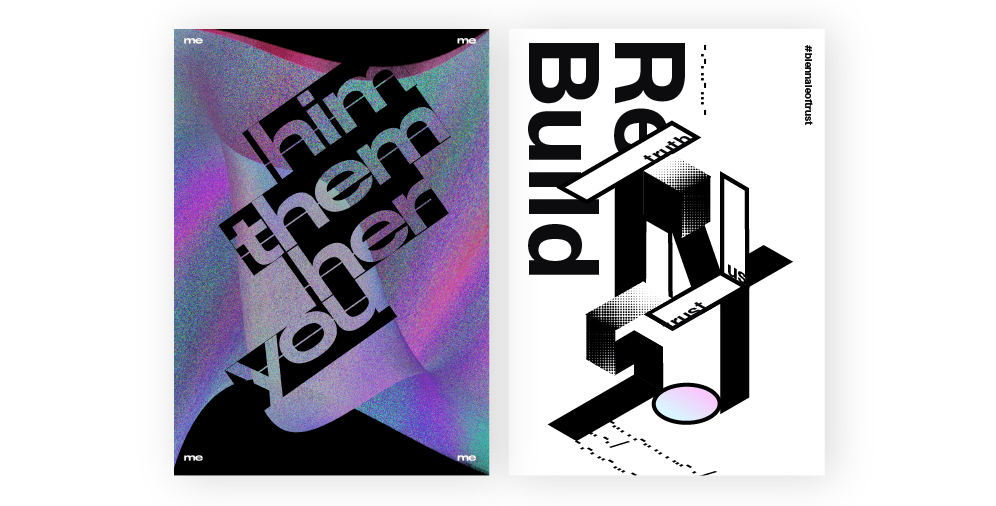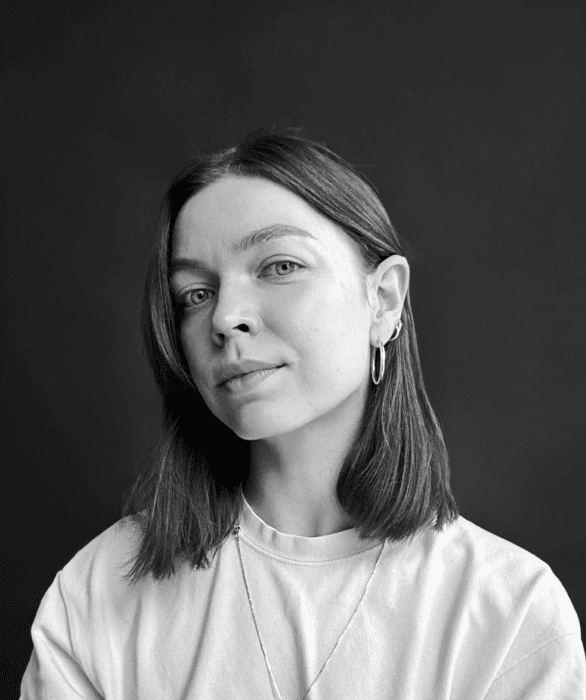Outline:
Abstract and minimalist graphic art is gradually gaining prevalence in the art world. But what exactly is abstraction in art, and why has it become such a phenomenon?
Let’s ponder this question for a moment from a philosophical perspective. Could it be that there is a growing sense of meaninglessness in modern life? Are people yearning for simpler times? The deluge of information inevitably leads to confusion, tribalism, and a lack of common purpose, prompting a desire to “get away.” This trend is reflected in art and custom illustration services.
In many cases, complex external design elements can overshadow the internal nuances and core meaning of a message, detracting from its essence. Abstract art, on the other hand, reflects something beyond the immediate environment, and this is increasingly sought after in today’s world.
However, to delve deeper into the topic at hand, let’s answer the questions: what is abstraction in art, and how has it evolved into what we see today?
The Beauty in the Chaos: An Introduction to Abstract Art
The growth and continuation of abstract art can be attributed to several factors. The industrial revolution and the senseless slaughter brought about by mechanized warfare created a context that contributed to the emergence of abstract art. Additionally, with the decline of religious belief and the rise of mysticism, individuals began exploring different states of consciousness in an attempt to make sense of the modern world.
In terms of a concise definition of abstract art, it involves disengaging the literal meaning of an object and providing it with a new, authentic conceptual dimension. Abstraction, with its strongly pronounced personal undertones, can be challenging to categorize, but this is precisely its strength as it draws in a wide range of viewers.
Minimalism is one of the most prominent forms of abstract art. Its design is focused on stripping away all superficial elements to reveal the foundation of what is being presented. Thus, minimalism aligns with the overall mission of abstract art, which is to recreate intangible concepts in a tangible form.
Abstract art is particularly popular in graphic design because it offers countless opportunities for exploring the depths of imagination and inspiring unique artistic endeavors. It is an art form that encourages artists to push the boundaries of creativity and develop new ways of expressing themselves.
Beyond Realism: The Rise of Abstraction in Art
It is important to note that abstract art did not simply appear out of nowhere after World War I. Like all trends, it had roots that could be traced back to earlier movements. However, the trauma and devastation of the mechanized warfare of World War I played a significant role in the explosion of abstract art, as the realities of war became too palpable for many artists.
Abstract art served as the way to deconstruct the horrors of war in order to make sense of it. Realism, which had been the dominant mode of artistic representation, went into crisis, and abstraction presented an endless territory for exploration and experimentation. This exploration of abstraction can be traced back to the impressionists and post-impressionists, who were among the first artists to denounce the representational nature of art. They twisted and altered realistic representations in order to express fleeting and passing moments that had never been explored before.
Early experiments with the “art for art’s sake” principle deepened artists’ aspirations to explore the physical world from the perspective of the emotions it evokes, rather than simply representing it in a credible manner. Modern abstract art emerged fully formed at the beginning of the 20th century and quickly became one of the most radical art movements of its time, as the sanctity of realism had never been compromised before. Artists such as Wassily Kandinsky, Piet Mondrian, Kazimir Malevich, Henri Matisse, Hilma af Klint, and Pablo Picasso carved out the principles of abstract art and made them widely known across the world.

Abstraction as a Form of Expression: Why It Matters
Abstract art serves as a powerful reminder that human beings have a need to experience life beyond language and physical representation. Through its use of elements that can easily change shape, form, color, and texture, abstract art can alter the message conveyed or reshape the overall meaning of a story being presented through design.
As for minimalist design, it has become one of the most favored forms in graphic art due to several reasons:
– Firstly, elaborate designs can be less recognizable and difficult to understand, whereas minimalist art can have an immediate impact if executed correctly, evoking a sense of novelty and innovation.
– Secondly, intricate designs can be exhausting and less appealing to viewers, whereas minimalist design is less taxing and provides visual “room” for exploration and attention to detail.
– Finally, minimalist design can be more powerful and compelling as it features only a few key elements, each with a fair share of visual responsibility and persuasive power.
From a philosophical perspective, minimalism is becoming increasingly popular among designers because it reflects leanness and agility. In a highly competitive marketplace, speed is crucial, and the ability to react quickly to every opportunity is essential to success. Smaller niches, which require clear definition, often benefit from minimalist design.
Interestingly, Soviet Russia also had a tradition of minimalist design, particularly in communicating with the masses through the simplest possible means. The propaganda utility of Russian minimalism was evident in the context of immense distance and natural anarchy, coerced into productive labor with the help of a dictator. Thus, we may say that the culture of minimalism is a natural extension of such design firms.
In conclusion, abstract and minimalist art both represent distinct and equally valid ways of understanding the world. Abstract art offers a form of chaos that can reflect or react against reality, while minimalist design offers a lean and agile approach that is ideal for today’s fast-paced world.

The Minimalist Mindset: How to Design for Impact and Efficiency
Creating a minimalist design may seem effortless at first glance. All you need to do is add a sleek photo to your landing page that screams luxury and sophistication. However, achieving a minimalist design that combines only the most basic elements while making them extraordinary requires a great deal of expertise and effort. Being creative and effective with the bare minimum is an art itself.
The process of creating a minimalist design involves the creation of several elements that ensure its comprehensiveness and help designers accomplish their objectives. The principle that permeates the entire minimalist design process is “less is more.” When applying this approach, designers must consider how to efficiently convey their message with the most essential elements. The following factors lay the groundwork for the delicate and exquisite minimalist graphic art item.
Fonts
Fonts are a vital element of any minimalist design since text is a primary means of providing information to potential users. Typography and everything that accompanies the text require careful attention. Beautifully arranged typography can enhance your general message and highlight the level of your commitment. When working with fonts, it’s crucial to know which kinds are preferable for specific purposes and how they can be used to elicit an emotional response. Typography and text affect the way every other design element is perceived, specifically contrast, balance, and negative space.
Balance
Balance is significant in simple and minimal design. If a clear-cut design item is balanced in terms of color and its location in relation to other objects in the layout, then the overall composition will be harmonious and coherent. If not, it could be damaging to the whole concept and detrimental to your initial goals. Balance doesn’t necessarily mean an impeccable symmetry — it’s more about bringing items to uniformity and checking if they are visually aligned with each other.
Color
Contrary to popular belief, minimalist design is not restricted to black and white. It welcomes any color schemes as long as they’re unified and coordinated. Choosing a few striking colors or their combinations and integrating them into your design object can secure an immediate association with your brand or company.
Meaningful Imagery
In minimalist graphic art, an eye-catching illustration or powerful animation will help to bring your message across expertly and accurately. However, it should be noted that images should be of the highest quality and easily incorporated into the overall layout; otherwise, their usage will be harmful.
Negative and white space
One of the most important features of minimalist design is its “spaciousness.” Not a single variable in it is redundant or excessive. This is achieved through a considerable amount of “free” negative and white space that serves as a foundation for any visual arrangement. It helps to bring focus to specific elements and pieces, add some shape to the composition, and highlight the blocks that need to be in the spotlight.
At our company, we specialize in using the “minimalism” card to the fullest. Contact us, and we will help you achieve that elegant and sophisticated minimalist corporate design you’ve been frantically telling your coworkers about.
On a Final Note
Life is undeniably becoming more complex, presenting us with two paths to choose from. As Robert Frost once said, “I took the one less traveled by.” While some prefer massive complexity and chaos, others seek simplicity. However, for some, both options are appealing, and it may not be a straightforward decision.
Modern graphic art has responded to the challenge of our increasingly complicated lives by representing the chaos and confusion we often find ourselves in. Given the massive complexity of life, it can be challenging to fully understand it, and we need a simple rubric like A B C to comprehend what’s essential. This is where clean and minimal design comes into play.
If you’re already drawn to the concept of abstract or minimalist design for your website, and you’re looking for ways to execute it effectively and creatively, you can share your ideas in the comments. Alternatively, you can contact us to create the perfect minimalist web design or add stunning abstract illustrations to your platform.





